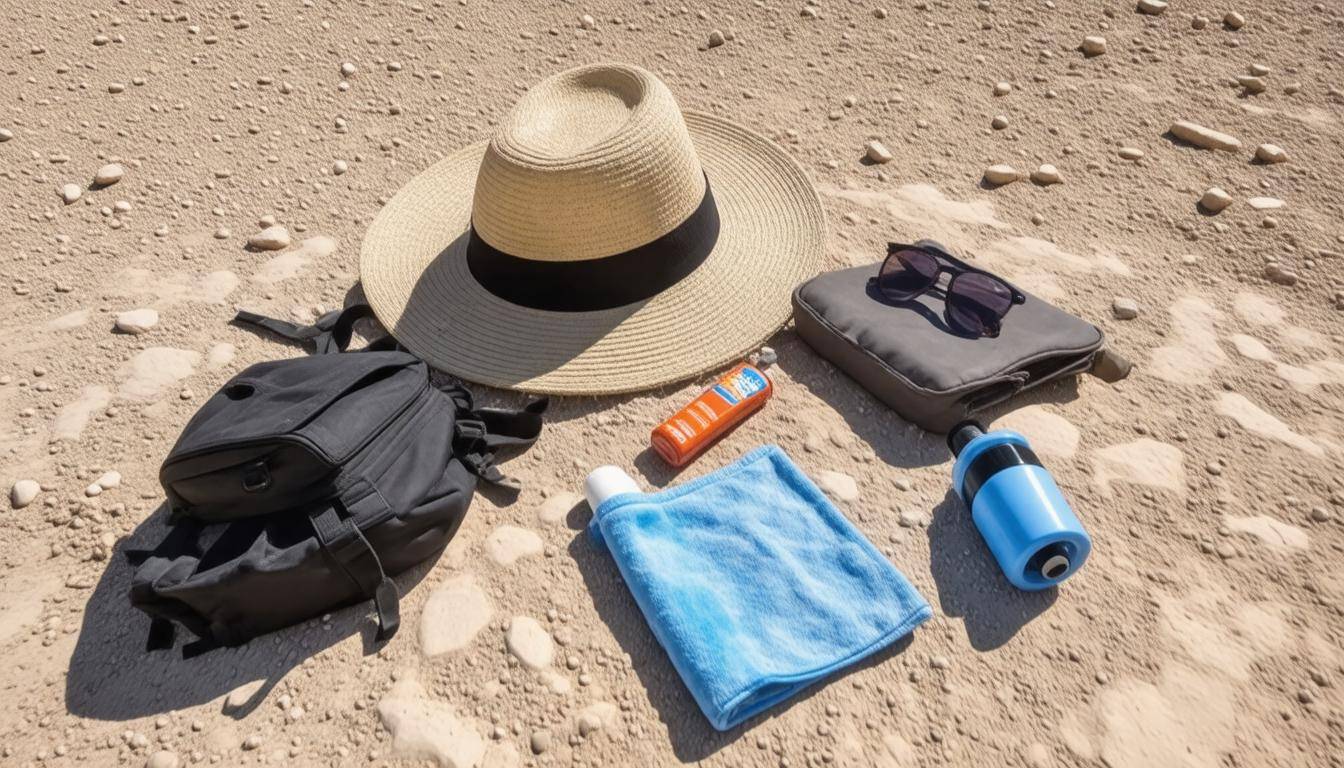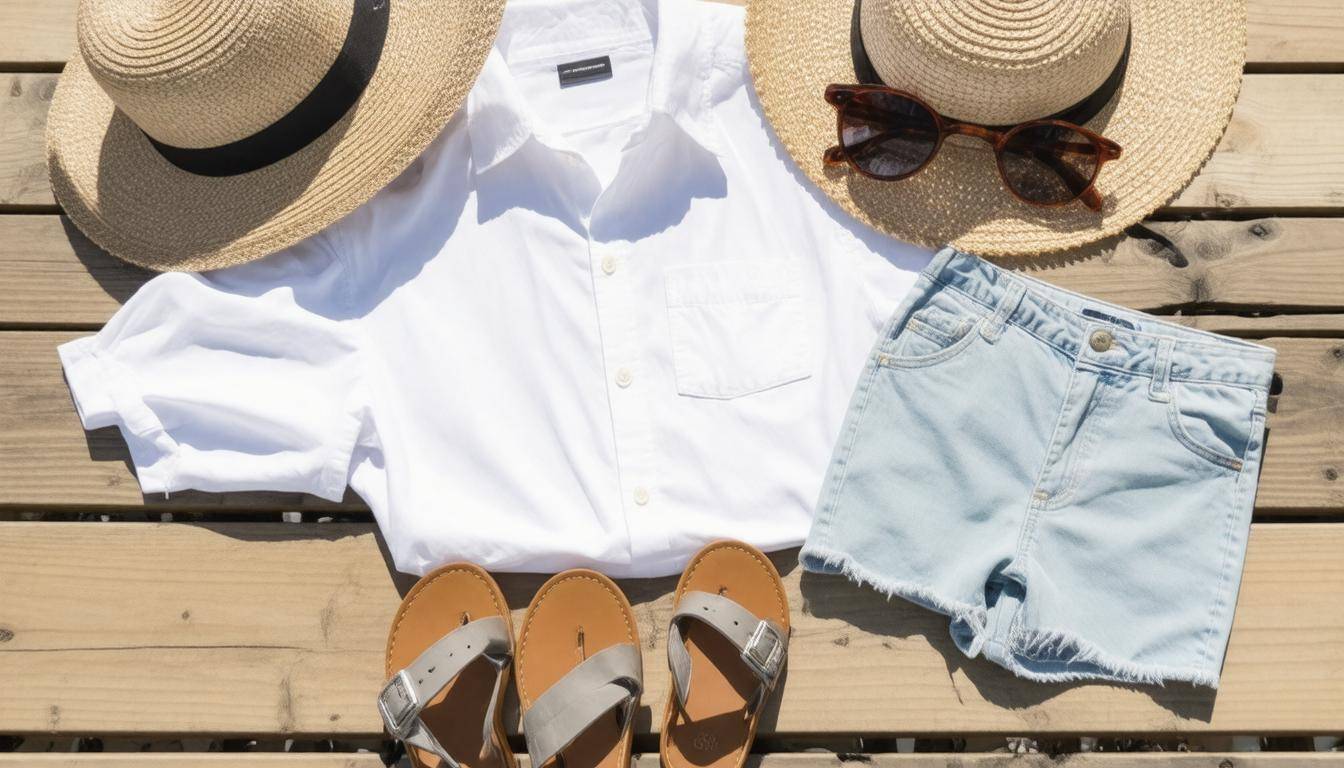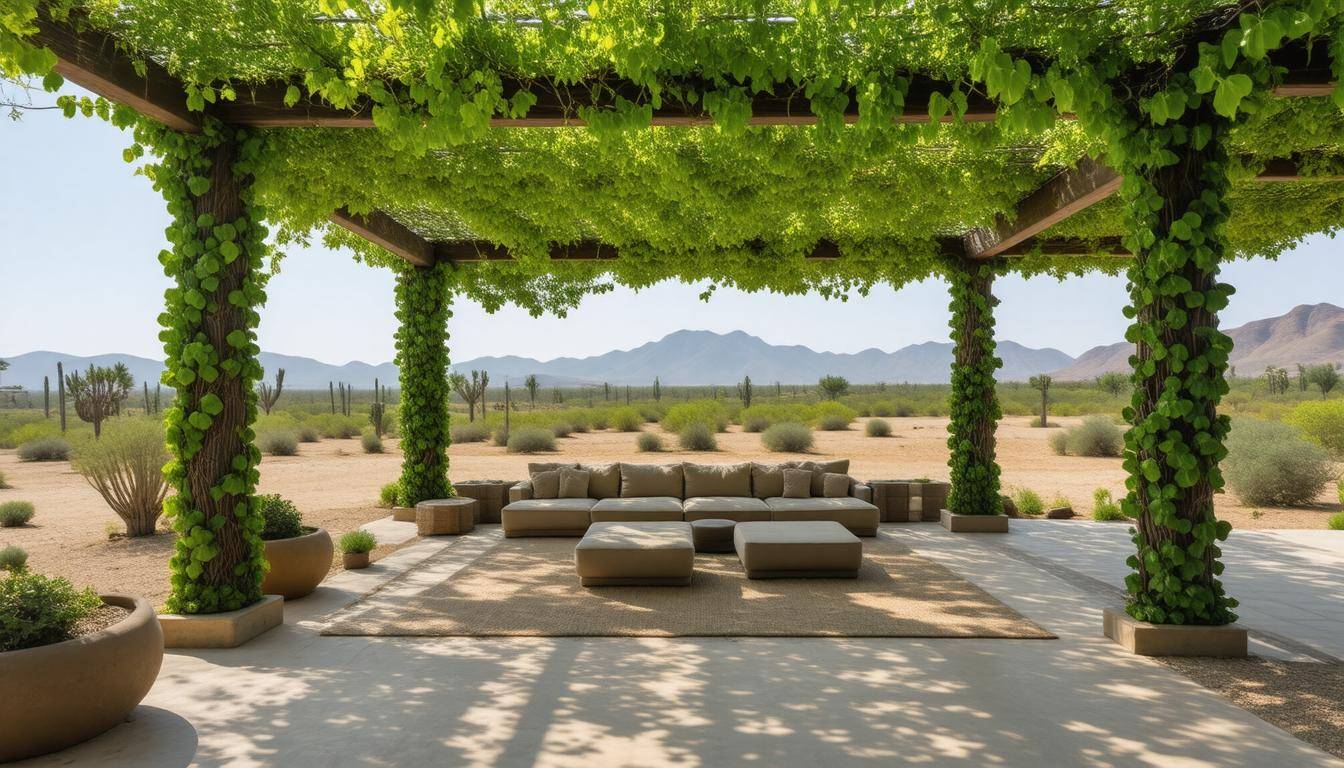When the Northern Cape experiences a heat wave, staying cool can feel like an uphill battle. With temperatures soaring, it’s crucial to equip yourself with the right knowledge and tools to beat the heat and ensure your safety. Over the years, I’ve come to appreciate that surviving these extreme temperatures isn’t just about finding a shady spot or drinking water when you’re parched. Instead, it’s about being proactive, knowing what to do, and seamlessly integrating simple practices into your daily routine. In this guide, we’ll explore practical tips on hydration, clothing choices, cooling strategies, and community resources that will empower you to face the sweltering sun head-on and come out unscathed. Let’s dive in!
To survive a heat wave in the Northern Cape, it is essential to stay hydrated by drinking plenty of water, wear lightweight and light-colored clothing, and avoid outdoor activities during peak sunlight hours. Additionally, keeping your living area cool with fans or air conditioning and having a first aid kit on hand for heat-related illnesses can significantly enhance your safety during extreme temperatures.

Staying Safe in the Northern Cape Heat
Protecting yourself during a heat wave is about more than just finding shade; it’s a proactive approach to ensuring your well-being. During those intense summer months, managing heat exposure becomes crucial. The first line of defense is understanding when to retreat indoors. You’ll want to stay toasty but not too toasty, and keeping out of the sun during peak hours, which typically fall between 10 a.m. and 4 p.m., can help you dodge most sun-related hazards. This doesn’t mean you’re stuck inside all day; it’s about being strategic with your activities.
Moreover, keep yourself informed by regularly checking weather updates. Rapidly changing conditions can offer insights into impending heat advisories, allowing you to adjust your plans accordingly. It’s wise to have notifications set on your phone for immediate alerts or even keep an old-school radio handy for updates if technology fails you.
Navigating outdoor activities requires careful consideration of timing. If you must venture out, early mornings or late evenings are ideal for those who want to exercise or enjoy time outside without facing the brunt of the heat.
You might also want to consider adjusting your wardrobe during these months. Opt for light-colored, loose-fitting clothing made from natural fabrics such as cotton or linen, which allow air to circulate and keep sweat close to the skin without trapping heat. Even hats can play a significant role in shielding your face from harmful UV rays.
Finally, don’t forget about hydration; water isn’t just a thirst quencher, especially in these sweltering conditions.
Staying hydrated is one of the most important aspects of beating the heat—don’t wait until you’re thirsty! Drink water consistently throughout the day, and try infusing it with fruits like lemon or mint for added flavor and nutrients. Carrying a reusable water bottle is not just environmentally friendly; it serves as a constant reminder to drink up!
In extreme conditions where temperatures soar above 45°C (113°F), knowing how to recognize the signs of heat exhaustion becomes vital. Be aware of symptoms like excessive sweating, dizziness, headaches, or nausea. If you experience any of these symptoms, find a cool place immediately and sip on some water while resting. A cool shower or moist cloth on your skin may also help bring your body temperature down effectively.
Together, these measures create a practical framework for combating the oppressive heat in the Northern Cape. As we move forward, let’s explore crucial tools and equipment that can further enhance our resilience against the rising temperatures.
Essential Gear for Heat Waves
Proper gear can indeed make a significant difference in how you cope with a heatwave. Think of it as your personal shield against the sweltering sun and oppressive heat. With high temperatures bearing down, each item you carry should serve a clear purpose—whether it’s blocking out sunlight or keeping you cool.
Key Items to Consider
Ensure you have these essentials:
-
High SPF sunscreen: Look for broad-spectrum protection with at least SPF 30. UV rays can cause both immediate discomfort and long-term damage. It’s a small step that pays off significantly in avoiding burns.
-
Wide-brimmed hat: Selecting a hat with a minimum brim of three inches provides critical shade to your face, ears, and neck. Choose lightweight materials that allow airflow while blocking harmful rays.
-
Sunglasses with UV protection: Protecting your eyes from ultraviolet light is just as crucial as shielding your skin. Opt for polarized lenses that reduce glare and increase visual comfort in bright conditions.
-
Portable fan: A battery-operated fan offers instant relief during outdoor activities. Look for lightweight models that easily fit into bags and provide adjustable speeds for different situations.
Each item might seem simple, but they collectively create a protective barrier against the harsh elements. Applying a broad-spectrum SPF 50 sunscreen not only protects your skin from harmful rays but also nourishes it, allowing you to enjoy the sun without worry. Even if you’re taking a quick stroll or heading out to run errands, these items are worth their weight in gold on hot days.
Equipping yourself with proper gear goes hand-in-hand with maintaining hydration levels; thus, understanding hydration strategies becomes essential in surviving these extreme conditions.
Effective Hydration Techniques
Staying hydrated under the scorching sun isn’t just about drinking fluids; it’s an active strategy that requires thoughtful planning. It starts with starting early—instead of waiting until you’re thirsty, make it a point to drink a large glass of water first thing in the morning. Your body loses fluids while you sleep, so replenishing them right away sets a positive tone for the day ahead.
Throughout your day, it’s crucial to have a refillable water bottle at hand. Aim for at least 3 liters over the course of each day, and don’t forget to take sips frequently rather than gulping down large amounts at once. One tried-and-tested method is to take a few swallows every 15-20 minutes. This approach helps keep your hydration levels stable and prevents that uncomfortable feeling of being overly full.
In my experience, simply having the bottle within reach serves as a constant reminder to hydrate—a simple yet effective trick!
Another vital aspect of hydration is maintaining electrolyte balance. High temperatures lead to increased sweating, which results in losing not just water but important minerals like sodium and potassium. Incorporating oral rehydration salts or even sports drinks when needed can be invaluable in replenishing these lost electrolytes. However, be cautious with sugary drinks; they might provide a quick boost but can also lead to dehydration if not balanced properly.
According to the Mayo Clinic, proper hydration positively affects mood and brain function, while dehydration can lead to fatigue, headache, and heat-related illnesses. Preparing yourself with effective hydration techniques ensures that you enjoy your time outdoors without risking your well-being.
With hydration sorted, we can now shift our focus to how your diet plays a crucial role in managing heat effectively.
Nutritional Tips for Hot Climates
To navigate through a scorching heat wave effectively, you need to prioritize foods that not only hydrate but also cool your body down. When the temperature rises, your body works extra hard to maintain its internal balance, and what you eat plays a crucial role. Think of your diet as a way to manage the heat from within.
Cooling Foods to Eat
First, let’s talk about water-rich fruits. These are your best friends during hot weather. Fruits like watermelon and cucumbers have high water content and help maintain moisture levels in your body while also providing essential vitamins and minerals. Oranges, with their juicy flesh, are another excellent choice—not only do they provide hydration, but they also boost vitamin C levels.
Next, light salads are an ideal option too. Leafy greens, tomatoes, and avocados can create refreshing meals that are easy on your stomach and won’t weigh you down. A simple salad drizzled with lemon juice or vinegar adds a burst of flavor and enhances hydration.
You might be tempted to indulge in heavier fare during meals; however, heavy or spicy foods can actually raise your body temperature. It’s fascinating how some spices can cause sweating, which might seem beneficial until you realize it increases dehydration levels rather than quenching thirst.
With that in mind, try to steer clear of rich meals that take longer to digest. Heavy proteins like red meat should be saved for cooler months when your body craves heartier dishes. Instead, opt for grilled chicken or fish—cooked lightly—to get your protein fix without overheating your system.
In addition to food choices, consider how the timing of your meals can further impact your comfort level; adjusting meal times could enhance your energy levels during scorching days as well as support hydration efforts.
Clothing Choices for Maximum Comfort

What you wear can significantly affect how you feel during a heatwave. Lightweight, loose-fitting clothing is not just a recommendation; it’s a necessity. Fabrics like cotton and linen allow your skin to breathe and help regulate your body temperature. Cotton absorbs sweat quickly and allows it to evaporate, while linen boasts natural moisture-wicking properties that keep you dry. Not to mention, these materials feel soft against the skin—an important factor when temperatures soar.
Best Fabrics for Hot Weather
When it comes to fabrics, don’t shy away from exploring moisture-wicking synthetics as well. These are specially designed to draw perspiration away from your skin, allowing it to evaporate and keeping you cooler than traditional materials. Opting for light colors can also make a difference since lighter shades reflect sunlight rather than absorb it, thus reducing added warmth. For those particularly hot days, consider garments made with UPF (Ultraviolet Protection Factor) fabric—these not only shield you from harmful UV rays but can also improve airflow and comfort.
A study by the University of Hoheheim noted that linen clothing allows 50% more airflow than other fabrics, making it an excellent choice for hot weather.
Apart from fabric selection, consider your outfit’s fit. Loose clothing allows air to circulate around your body more freely compared to tight apparel, which can trap heat and moisture next to your skin. As tempting as it may be to wear shorts on the hottest days, long sleeves in breathable fabric might actually keep you cooler by protecting your skin from sunburn, ultimately preventing overheating.
Strategic Layering
If you’re navigating variable temperatures throughout the day—for example, moving from humid outdoor conditions into air-conditioned spaces—think about layering strategically. A lightweight, open kimono or a long-sleeved shirt over a tank top can serve as an effective way to adjust without feeling overly restricted.
Accessories also play a role in heat management. Wide-brimmed hats protect you from direct sunlight while keeping the sweat from dripping down into your eyes; meanwhile sunglasses provide additional comfort by reducing glare.
By consciously selecting your clothing and understanding how they contribute to temperature regulation, you can enhance your comfort during extreme heat events. Now, let’s transition into ways to create cooler environments that further alleviate the heat stress.
Creating Cool and Shady Spaces

One of the best strategies to survive a heat wave is to transform your living environment into a sanctuary of coolness. It’s about finding ways to mitigate those relentless sun rays while ensuring your space remains comfortable and enjoyable.
Start by examining your windows and doorways, as these are prime culprits for letting in unwanted heat. By investing in high-quality window coverings, particularly blackout curtains, you can significantly block out direct sunlight during the hottest parts of the day. These not only help lower room temperatures but also provide privacy.
There’s more you can do! Consider using reflective window film as an alternative or complement to curtains. This film can reduce solar heat gain while still allowing natural light to enter, keeping your interiors well-lit without overheating.
Additionally, integrating fans and coolers into your strategy can make a remarkable difference. Ceiling fans should rotate counterclockwise during warmer months to push cooler air downwards, creating a wind-chill effect. Portable A/C units and evaporative coolers are fantastic for targeted cooling when you need relief in specific areas of your home—like that hot little reading nook or workspace. Remember, with portable solutions, positioning them strategically near windows or doors will enhance their efficiency.
Now, let’s talk about the power of indoor plants. Not only do they add a touch of nature and beauty to your rooms, but they also actively work to improve air quality and create a cooling effect through transpiration. Plants like snake plants, peace lilies, and ferns thrive indoors and can elevate your mood while helping regulate temperature.
Sarah’s story is a testament to these principles: by weaving these elements into her living space in Kimberley, she not only created a beautiful environment but also managed to drop her indoor temperatures by nearly 10°C! This was achieved simply by being intentional with her window treatments, implementing portable A/C units, and incorporating greenery—an inspiring example of how thoughtful adjustments can lead to meaningful comfort.
However, knowing how to create these spaces is just half the battle; maintaining comfort throughout extreme temperatures is equally vital for ensuring both well-being and health amid the relentless heat common across this region.
Health Tips for Extreme Temperatures
During intense heat waves, our bodies go through significant stress as they strive to maintain a safe internal temperature. It’s essential to tune into your body’s signals. Recognizing that excessive sweating might be fine initially, but if it becomes persistent or is accompanied by symptoms like dizziness or confusion, it could indicate something more serious.
For instance, imagine enjoying a sunny day outdoors and suddenly feeling dizzy without breaking a sweat; this scenario could signify potential heatstroke. It’s vital to react quickly in such situations.
As temperatures soar, hydration emerges as one of the most crucial factors in combating heat-related illnesses. Water should become your best friend during these sweltering days. Aim to drink at least two liters per day, even if you don’t feel thirsty—your body may silently be begging for hydration. Additionally, consider incorporating electrolytes into your diet, particularly if you’re engaging in strenuous activities or sweating heavily. Drinks like coconut water or electrolyte-packed sports drinks can help replenish what’s lost through sweat.
Understanding how your body reacts to heat lays the foundation for effective preventive measures. Plan outdoor activities when the sun is gentler, usually early morning or late evening. This simple change can significantly cut down on exposure and reduce the risk of overheating.
Monitoring Your Body
Beyond hydration and timing, it’s essential to check in with yourself periodically throughout hot days. Here’s a helpful approach:
| Body Signal | Action to Take |
|---|---|
| Persistent headache | Find shade and hydrate |
| Weakness | Rest in a cool place |
| Rapid pulse | Cool down and monitor heart rate |
By knowing these signals and regularly assessing how you’re feeling, you can take action before things escalate significantly.
Keeping these health tips in mind will help ensure that both you and your loved ones navigate through heat waves safely and comfortably. With personal health safeguarded, let’s explore the support systems available within your community during these challenging times.
Community Resources and Support
Leveraging local services can make a significant difference during a Northern Cape heat wave. Numerous community resources are available specifically designed to help residents manage sweltering conditions effectively.
First and foremost, many municipalities establish local cooling centers during extreme heat events. These spaces are strategically set up to provide a reprieve from the heat, offering air conditioning, hydration stations, and sometimes even health personnel on standby. It’s wise to familiarize yourself with the locations of these centers ahead of time. Often, you can discover them by contacting your local government or checking their website for announcements on where and when they will be open.
In addition to cooling centers, being informed plays a crucial part in managing heat waves.
Community alerts are another invaluable resource. Signing up for weather and emergency alerts ensures that you receive timely information about impending heat waves or other public safety announcements. Many of these systems send notifications directly to your phone or email, making it easy to stay connected with what’s happening in your area. If you’re already overwhelmed by daily activities, setting up such alerts can give you peace of mind knowing that you’re prepared for changes in weather conditions without constantly monitoring the news.
And let’s not forget the power of community ties.
Organizing neighborhood check-ins is an excellent way to create a safety net among residents. This could involve setting a schedule for neighbors to check in on one another, especially targeting vulnerable individuals such as seniors or those living alone who may not have access to air conditioning. Establishing this kind of system ensures that everyone feels cared for and has someone looking out for them. Simple actions like a quick phone call or knock on the door can help alleviate feelings of isolation while also monitoring well-being during those stifling days.
“The community center’s cooling station was a lifesaver during last summer’s heatwave,” recalls John, a local resident. His experience echoes the importance of utilizing available resources when temperatures soar, demonstrating how community connections can truly provide comfort in uncomfortable situations.
Ultimately, managing extreme heat requires not just individual efforts but collective support as well.
Navigating and surviving a heat wave in Northern Cape necessitates a multi-faceted approach combining personal preparation and community involvement. By staying proactive—whether it’s seeking out cooling centers, signing up for alerts, or checking on your neighbors—you can help mitigate the impact that extreme temperatures have on your health and well-being. In doing so, you not only shield yourself from the blistering heat but also educate and inspire those around you to take similar measures.
Stay safe and informed as we face the challenges of extreme heat together!











